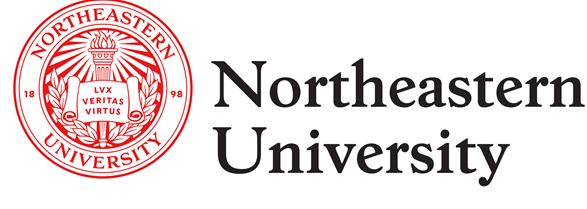
NEU – Mugar Bai Willets
330 Huntington Ave. Boston, MA 02115
Project # 2449
Emergency Response Plan
ALL EMERGENCIES SHOULD BE REPORTED BY CALLING 911- or (617) 373-3333
SITE INFORMATION
This Emergency Response Plan (E.R.P.) is specifically developed for Consigli Construction work associated with at the Mugar Bay Willets at Northeastern University
SITE LOCATION
The Northeastern University Mugar Bai Willets is Located at 330 Huntington Ave. Boston, MA 02115. The location for the project field office(s) is at the Project jobsite (notifications of any changes will be provided). The field office will be the Emergency Operations Center (EOC).
EMERGENCY TYPE
The following situations are considered emergency response actions and should be handled in accordance with the procedures outlined in this plan.
- Serious Injury/Fatalities
- Fire/Explosion
- Structural Damage/Collapse
- Weather or Geological Event
- Environmental Incident
- Traffic Disruption
- Utility Damage
- Illegal Activity
- Labor Problems
- Bomb Threats/Military Ordinance Unearthing
- Acts of Terrorism.
When reporting an emergency, please provide the following:
• Your location, phone number, and name.
• The location of the incident (building name, floor and room number).
• Nature and extent of the incident (injury, accident, spill, smoke/fire, damage, etc.).
• The safest route to the incident
Crisis Response Protocol:
- Attend to the injured.
- Immediately contact Dan Della-Giustina (508)686-6008
- Post person at front gate, only allow access to emergency responders.
- Record names/addresses of witnesses
- Do not allow media on site.
- Refer all media inquiries to home office (See “Crisis Response Cards”)
A Consigli designated individual shall wait at the building site entrance to escort Emergency Services personnel as they arrive.
The following is a list of the Chain of Command/Call Hierarchy on the project for establishing lines of succession during communication involving all emergencies.
Back– End of Emergency Response Plan
Emergency Contact Names and Numbers
1. First call: 911 or (617)373-3333
2. CCC Superintendents: Jay Khubchandani (774)278-8259
3. CCC Project Manager: Stefan Nicotra (774)573-4398
4. CCC General Superintendent: Mike Boucher (774)573-4082
5. Dan Della-Giustina: Corporate Safety (508)686-6008
City of Boston
Boston Police Department- Non-Emergency (617)343-4888
Boston Fire Department- Non-Emergency (617)343-3550
Boston DPW/Water/Sewer Department (617)635-4900
NSTAR Gas Co. (800)592-2000
Dig Safe 811
NSTAR Electric (800)592-2000
Telephone-Verizon-(local) (800)870-9999
Note: If any utility is struck/damaged, 911 must be called immediately!
Additional Consigli Construction Contacts:
- CCC Safety Manager: Bryan Kingsbury (508)808-9359
- Consigli Construction, Inc. – Boston Office (617)259-1007
- CCC Project Executive – Anthony Serrano (603)557-7075
Other Project Contacts
NEU PM – Marc Yokel (774)888-7935
NEU PM – Michael Petrucci (617)991-7511
NEU Facilities: (617)373-2754
NEU Police (non-emergency) (617)373-2121
Boston Fire Department (non-emergency) (617)343-3550
Boston Inspectional Services (617)635-5300
Back– End of Emergency Contact Names and Numbers
Medical Facilities
OCCMED
10 Hawthorne Pl. Boston MA, Suite 114 02114
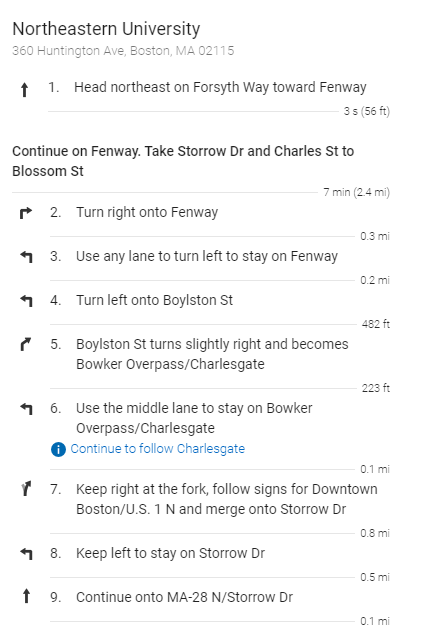
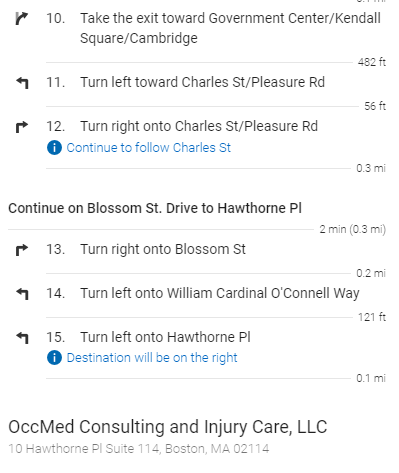
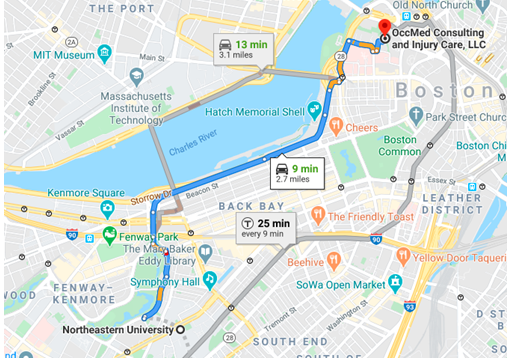
New England Baptist Hospital
125 Parker Hill Avenue
3rd Floor, Suite 360
Boston, MA 02120
Phone: (617)754-5620
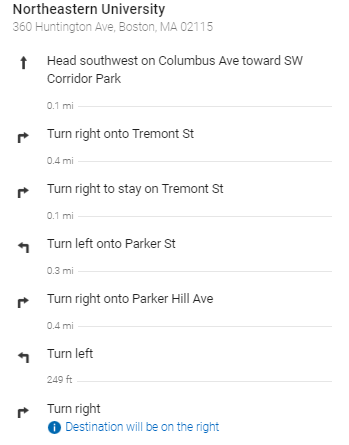
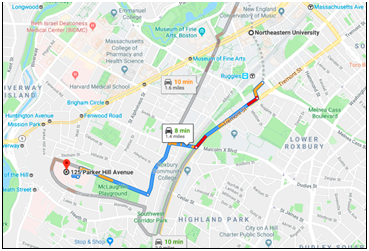
Back– End of Medical Facilities
Site Safety Plan
Emergency Procedures: A Consigli representative will be dispatched to the Main entrance of the building to meet the responding Emergency Personnel and advise the individual in charge of the location of the incident as well as any chemicals or hazardous substances that may be present on any of the floors. Safety Data Sheets will be readily available if needed by the Fire Dept.
In the event of a serious injury requiring the assistance of Boston EMS the injured worker will be kept as comfortable as possible. Emergency first aid if necessary, will be administered. Under no circumstances will the injured person be moved unless the worker’s life is in danger because of fire or calamity. A worker will be assigned to meet the medical personnel at the above location to direct them to the location of incident.
In the event an evacuation is required all personnel at this job site will follow the building/site evacuation plan and meet at the designated Muster Point (see posted plans in work areas). The foreman for each company will meet at that location and take a head count of their staff and report to Consigli Superintendent. If for some reason a worker is unaccounted for, the fire department will be notified of the last location where the worker was observed.
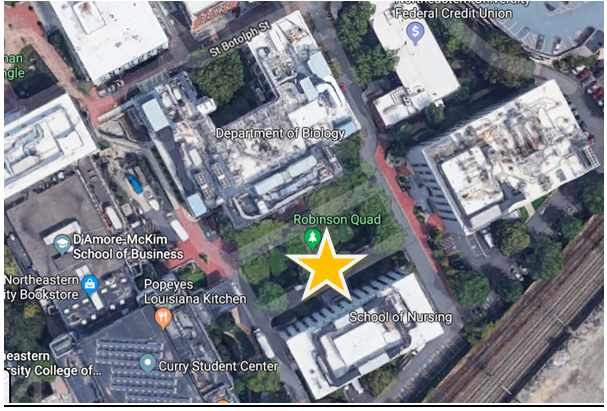
NEU Mugar Lab renovation project anticipated to start February 2021 consists of the renovation of 2,000 sf of lab spaces taking place on the first and basement levels. 1st floor will consist of a complete gut and renovation of designated spaces. This will also include the abatement of ACM flooring. Basement work will consist of a partial demo and renovation. We will be using temporary walls to separate ourselves from the occupants in the building. The new lab spaces will include new lab gas and waste services as well as new HVAC for general space and fume hoods. Finishes will include new flooring and lab casework. Shutdowns will be coordinated with NEU to avoid affecting areas outside of our construction space.
PURPOSE: The purpose of this Site-Specific Safety and Health Program is to illustrate Consigli’s approach to identifying project specific hazards and controls and how said risk is managed through a comprehensive Safety and Health Program.
S.A.F.E.: Staying Accident Free Every Day is the Safety Mission that forms the very foundation of the Consigli Safety Culture. The S.A.F.E. mission, which is supported by technology, (Predictive Solutions internal auditing instrument which identifies and defines leading indicator related information); Leadership (Empowering our team members to assure safe projects); Humanization (Protect the ones you love by protecting yourself); Jobsite Gym (Morning warm-up stretch program); Training (Integrating sub-contractors into the Consigli Safety Culture); and Lean (nothing hit the ground), is the driving force behind Consigli’ s drive to our vision – ZERO. ZERO is the philosophy that all accidents are preventable, and that no accident is acceptable. The S.A.F.E. mission is the guiding force to achieving the Consigli Safety Vision which is ZERO.
Identify the specific route in and out of the construction site (Traffic Management): Main construction access will be restricted to routes pre-determined by Northeastern University and Consigli. All contractors will be responsible for adhering to Boston, and Northeastern University and regulations regarding driving, parking and delivering materials. Pedestrians will be given the right of way at all times. Parking will not be designated for construction workers and all crews must make their own parking arrangements. This will be reviewed during orientation.
IAQ (indoor air quality): An indoor air quality report will be conducted and will be kept in the field office for reference. There will be a preliminary base line conducted and quarterly testing. Additional testing will be done if at any time there are complaints from either the hotel, or their guests. This work will occur in an occupied building for the entire project. During construction, an indoor air quality plan will be implemented. This plan will ensure that adjoining areas have not been contaminated during construction. The air will be tested for typical indicators such as but not limited to temperature, relative humidity, carbon monoxide, carbon dioxide, dust particulates and VOC’s (volatile organic compounds). Monitoring (frequency/duration) will be done in accordance with a written IAQ plan provided by a Certified Industrial Hygienist. Barriers will be set up between any work areas and occupied spaces prior to the start of any work. Negative air machines will also be used to create a negative air flow from the occupied space to ensure that no dust and debris enter an occupied area. If a hard barrier cannot be set up set up due to an unforeseen condition or emergency, a 6-mil poly barrier will then be used. This will only be allowed after approval from CCC Superintendent.
COVID 19: Please refer to separate Site Specific COVID 19 Plan developed for this project.
Pretask Plans: A JSA shall be conducted for each work task to be performed on a weekly basis. JSA’s shall be reviewed initially with all involved personnel performing that particular task, signed by all workers including their supervisor and filed on site.
Designated work hours (any work outside these hours must have prior CCC approval): All work shall take place during business hours, Monday – Friday 7:00am to 3:30pm, any work which may need to take place outside of these hours will need to be approved by the CCC Superintendent.
Life Safety: A detailed fire protection plan and NFPA 241 plan shall be developed with input from Consigli, and Northeastern University. All impairments to existing life safety systems will correctly permitted and coordinated with the building manager and the Boston Fire Department.
Any penetration through smoke and fire walls for new plumbing or electrical circuits necessitates:
- Smoke and fire wall penetrations shall not be left unattended.
- All penetrations are sealed by the end of each work shift.
Notification of Automatic Sprinkler System or Fire Alarm system shall be to:
- NEU Facilities Operations
- Boston Fire Dept.
- All shutdowns shall have a dedicated fire watch.
If it will be necessary to erect hard wall partitions in corridors adjacent to the workspace:
- All affected occupants shall be notified of corridor width reduction.
- All occupants shall be aware of primary and secondary routes of egress.
- Additional egress signage shall be posted.
- Corridor storage is prohibited.
Activity Hazard Analysis (AHA): An AHA/JHA depending on level of hazard shall be conducted for each identifiable feature of work to be performed. The AHA/JHA shall be submitted to Consigli superintendent/supervisor. AHA/JHA shall be reviewed weekly, signed by all workers including their supervisor, with all involved personnel performing that particular task.
Demolition: Prior to the start of demo operations, the contractor preforming demo will confirm that all utilities leading into the area have been made safe. The electrician will disconnect and lock out all electrical, the plumber will do the same with any plumbing lines, and the HVAC subcontractor will do the same on the HVAC piping and duct work. Lock out tag out will be reviewed during the pre-construction safety meetings to assure disconnect and responsibility for protection of existing utilities is safe for any construction activities to commence. In spaces where some electrical or mechanical must remain live, a color-coding system will be utilized for easy identification of live utilities that must stay active and utilities that must be removed. Any and all utilities spay painted Red are not to be touched and need to be protected during all operations. Utilities spray painted Green are to be removed as part of the selective demolition process only after lock-out/tag-out has been confirmed and utilities tested. If any utilities are unmarked, they shall be considered live. The demo contractor will be responsible for completing CCC demo checklist prior to the start of any work in their target areas
Fall Protection: All work over 6 feet requires some form of fall protection in accordance with CCC fall protection policy. All fall protection for work preformed on Scaffold will be needed at a height of 6 feet or greater. All scaffold erectors will maintain the ability to have fall protection by donning a harness and lanyard at all times during erection. Holes greater than 2” will be covered with acceptable material (3/4 plywood ½ steel) which will be secured and marked hole (cover must be able to withstand four times the intended load). Covers will stay in place until the hole/penetration has been filled. Before any work is to begin on the roof it must be determined what method of fall protection will be implemented (fall protection plan, 100% tie off, guard rails, flagging etc.) All workers working on a roof with a slope greater than 4 to 1 and exposed to a fall greater than 6 feet will be tied off 100% of the time spent in this location. Workers on a roof with a slope less than 4 to 1 may put flagging (six feet for roofers-15 feet for everyone else) lines up, whenever roofers and any other trade are on the same roof then the flagging must be pulled back to the maximum distance. Holes greater than 2” will be covered with acceptable material (3/4 plywood ½ steel) which will be secured and marked hole (cover must be able to withstand 2x the intended axle load). Covers will stay in place until the hole/penetration has been filled with duct or Pipe riser which extends above the deck.
**Review Chapter 13 for more detail**
Work on Ladders: All work on step ladders/straight ladders will be done correctly per manufacturer’s recommendations. Any worker who is on a step/straight ladder and could be exposed to a fall greater than the height of their work on the ladder will be required to install a form of fall protection. Step ladders will not be used as a form of access to a walking /working level, also all straight ladders will be tied of when installed for use. Only ladders with a rating Type 1A or 1AA will be allowed on Consigli projects.
Roof Work: Before any work is to begin on the roof it must be determined what sections of the roof will be worked a method of fall protection will be implemented (100% tie off, guard rails, flagging etc. the use of safety monitors is not allowed) Holes greater than 2” will be covered with acceptable material (3/4 plywood ½ steel) which will be secured and marked hole (cover must be able to withstand four times the intended load). Covers will stay in place until the hole/penetration has been filled with duct or Pipe riser which extends above the deck.
Scaffold and elevated work platforms: All scaffolds supported frame, pipe staging and lift platforms will be inspected daily before each shift by a competent person designated by each individual contractor who will be using it, which will be documented on Inspection tags located at the stair tower to each section… A scaffold checklist will be provided by CCC to each sub contractors designated persons to aid them with their daily inspection. All contractors who will be erect scaffold will provide CCC with certification/Qualification of scaffold erection training as well as an erection/dismantling plan. Fall protection is required 100% during erection/dismantling. Overhead protection will be provided for all access points at any buildings which are located under any form of scaffolding. Fall protection is required at 6’ on all scaffolds, on mobil scaffold fall protection is required at 4’. Mobile staging with a work platform with a height to base ratio greater than two to one will require outriggers.
**Please review chapter 14 for additional details.**
Aerial/Scissor Lifts: Not anticipated. If lifts are required, the area, ground conditions, and slab strength, in the intended work zone, will be inspected for overhead power lines, sink holes, covers, or any other unsafe conditions which cause an unsafe incident. Aerial lift platforms will be inspected daily before each shift by a competent person designated by the affected employer. All who will be performing work from an aerial lift will show documented proof of training prior to using the lift. Steel plates or equipment mats will be placed on the ground above any utility/ steam tunnel if there will be Aerial lifts operating on them. Workers will be tied off at all times when using an aerial lift.
Chemical and Materials: All Materials and chemicals used on-site will have Safety Data Sheets (SDS) provided before being brought onsite.
- SDS sheets on file in Consigli Construction’s Site Safety Plan
- All SDS sheets shall be readily accessible.
**Please review chapter 20 for additional details.**
Fire Protection: Limited hot work is anticipated, and efforts will be made to reduce the need for on-site hot work. If, however, any hot work is required the Consigli hot work permit program will be implemented. This will be coordinated through Consigli Construction, Northeastern University, and Boston Fire. All hot work will stop one hour before the regular end of the day work stoppage. All workers who perform hot work will possess the NFPA Hot Work Safety Certificate of training and the contractors will possess a Boston Fire Department “Welding/Cutting/Other Hot Work” permit.
Flammables will not be stored inside the building or left overnight in the building. All combustible or flammable materials will be stored in an appropriately rated lockable cabinet located no closer than 50 feet from the nearest structure. Fire extinguishers will be provided for every 3000 square feet. They will be installed on job made stands and conspicuously located throughout. They will be part of the daily inspection with extinguisher log completed monthly. Storage of any acetylene cylinders will be done in a secure and upright area, with good ventilation. This will be a strict no smoking project. All penetrations leading outside of the construction area will be fire stopped using approved fire rated material prior to the end of each shift.
**Review Chapter 17 for more detail.**
Electrical: All electrical tools, cords and equipment must be in good working order. To that end, all electrical tools and components must be visually checked on a daily basis. Any tools with damaged cords or damaged cords must be taken out service… All cords must be equipped with a ground pin, flat three wire cords are not allowed. SJO and SJT or other similarly rated cords only shall be used. The electrician will be responsible for all temp power and any temp lighting that may be needed. They will coordinate all lock out tag out procedures. All temporary power for the project will be installed on protected and dedicated circuits with 100% GFCI protection. GFCI will be tested by the electric contractor weekly to assure proper function with a logbook filed with CCC monthly. No live electrical work will be conducted.
**Review Chapter 26 for more detail**
Cranes: Utility installation may require the mobilization of cranes to the site. All cranes will require independent annual 3rd party inspections and will be utilized for operation only after detailed lift plans are submitted. It is anticipated that these cranes will be hydraulic. If a lattice boom crane is utilized (not anticipated), then the crane must get an on-site 3rd party inspection once the crane is assembled, prior to operation.
There is a requirement to assure that certified riggers, signalmen, and crane assemblymen are utilized. A site-specific erection plan will be required for the structural steel erection with review of certifications prior to any of these operations taking place. All picks are to be done by a licensed operator. As previously mentioned, a detailed pick plan will be required to assure that no picks are critical in nature. Critical picks are defined as those involving 2 cranes lifting simultaneously, a pick that is over 75% of capacity, a pick that involves the lifting of a man basket, or any other lift that is deemed to involve special conditions. Location and set up will be reviewed with crane operator prior to set up and pick. All lifting operations will require that the operator and any involved contractors follow the steps listed below as well as in CCC Crane Safety policy.
1. All Hoisting equipment will have an up-to-date 3rd party inspection certificate with the equipment which will be copied and filed in the office trailer.
2. All lattice boom cranes will have an independent 3rd party inspection completed each time one is set up on the project.
3. All workers working with the crane shall have all appropriate signalmen/rigging qualifications.
3. All equipment operators will be required to have in their possession all appropriate licensing and training as required by OSHA and the State of Mass.
4. NCCO certification will be required for all crane operators who will be operated on site along with an evaluation letter provided by the owner for the operator and the crane to be used on site.
5. All underground vaults and existing utilities will be marked before any excavation can begin as well as before any crane is set up.
6. Cribbing for outriggers shall be at minimum 3X the area width of outrigger floater. (Cranes only)
**Please review chapter 24 for additional details.**
Confined Space: None anticipated.
**Please review chapter 21 for additional details.**
Designated First Aid Plan: All injuries no matter how minor must be reported to Consigli Superintendent immediately. The superintendent will then report all injuries to the CCC Safety Director. A fully stocked first aid kit and blood borne pathogens kit shall be maintained on the project site. Only properly trained personnel will administer first aid. Consigli Construction shall follow Site Safety Plan for first Aid. Report all incidents to the Safety Director.
**Please review chapter 1 and 27 for additional details.**
Emergency Management Response: In the event of an Emergency the construction workers shall leave the building immediately. Point of assembly/muster shall be located next to the field office located in the Doucette field house.(see evac). In the Event of a DISASTER, the Superintendent or Safety director shall instruct the construction workers to leave the site or remain in place and await further instruction. The following steps should be taken in the event of an emergency.
When reporting an emergency, please provide the following:
• Your location (330 Huntington Ave, Boston MA) phone number, and name.
• The location of the incident ( building, floor and room number).
• Nature and extent of the incident (injury, accident, spill, smoke/fire, damage, etc.).
• The name and amount of the material spilled (if applicable); and
• The safest route to the spill (if applicable).
**Please review chapter 8 for additional details.**
Post Incident Review: Any incident that results in a recordable injury will require a post incident review. The worker who was injured along with their foreman/Safety Personnel/PM/Sup/etc… will need to fill out Appendix ?? (post incident review form) and attend this meeting. At this meeting they will re-emphasize their commitment to safety, determine chronology of events, identify contributing factors, identify root cause, provide improvement plan to prevent reoccurrence and discuss disciplinary actions taken (if any). Findings from this meeting will be shared/disseminated with all contractors on site to prevent reoccurrence.
Substance Abuse: As a condition of employment, all Consigli personnel are required to submit to a urinalysis test for determination of the presence of illegal substances. A positive result will disqualify the applicant for employment on this project.
Minimum Site Safety Requirement: All Consigli workers, and any subcontractors, shall have, at a minimum, an OSHA 10 Hour Construction Safety Outreach training certificate and shall provide documentation of training.
Personnel Protective Equipment (PPE): All CCC and sub contractor workers will wear hard hats and safety glasses at all times. All CCC personnel performing work with their hands shall be required to wear gloves that are appropriate to the task. When not performing actual work with their hand’s workers will be required to have them available for immediate use. Face shields will be required for all personnel who are performing overhead work, using metal chop saw or any type of metal grinding. All welders will be required to have hard hats with integral welding shields.
Restricted Areas: Contractors are prohibited from entering any adjacent areas of the Northeastern Campus or affected buildings unless work has been previously authorized and scheduled with Consigli and Northeastern University. The work area locations will be clearly marked. It is important that workers do not park in/in front of adjacent driveways during construction or for deliveries. Follow the designated delivery route. All workers will try to limit their impact on surrounding areas.
Lean requirements/Materials Management/Housekeeping: Getting materials into and out of the project will be a challenge that needs to be adequately planned. All deliveries are to be scheduled with the CCC Superintendent and Northeastern University notified. A comprehensive Activity Hazard Analysis shall be done on all materials that will be hoisted and placed into the building. Only materials which will be used/installed within three days’ time will be delivered to the site. Attention must be paid to structural analysis in regards to loading existing floors with material and equipment. Movement of all materials over 8ft. will require 2 workers.
Listed below are additional Lean requirements.
- No materials shall be delivered to the site earlier than 3 days before said materials are to be installed/put into place. If materials have to be delivered before that 3-day time period, subcontractor shall get prior approval from Consigli Superintendent. Because of this, notification / scheduling is required for all deliveries to the site. Subcontractors must notify Contractor at least 24 hours in advance. Contractor has the right to refuse any deliveries not properly scheduled or due to logistical constraints as necessary.
- All subcontractors’ delivered materials shall be placed on wheeled carts, wheeled racks or in wheeled bins so as to necessitate easy relocation in the event materials need to be moved. Carts, racks, or dollies shall not exceed manufacturers intended weight loads. Materials/tools can be delivered and stored on pallets only if pallet jacks are delivered simultaneously with said delivery to provide for ready mobility. Additionally, pallet jacks need to remain in immediate area. Each subcontractor will need to supply their own pallet jacks for their own materials and keep their pallet jack within reasonable distance at all times.
- All workstations shall be provided with wheeled trash bins for immediate placement of all debris produced as a part of the subcontractors’ operations. All trash will be immediately placed in wheeled containers provided by Consigli.
- All subcontractors shall use rubber wheeled carts when moving material or removing trash from a building. Any damage caused by the Subcontractor shall be repaired at the cost of the Subcontractor. Back charges will be appropriately assessed for the cost of the repairs. No trash or materials shall be left on the floor.
- Subcontractors shall, where feasible, elevate all electrical extension cords, hoses, or cables – removing them from all walking/working surfaces. Electrical Cords, when elevated shall be supported or suspended in a manner that does not subject them to damage.
- Storage of delivered materials in cardboard containers shall be discouraged. When materials must stay in cardboard containers, said containers shall be removed from the projects immediately after product is unpacked.
- Subcontractor will participate in schedule development meetings as required by Consigli.
Back– End of Site Safety Plan
Environmental Emergency Contact and Management Response
Environmental Emergencies/Response
Consigli identified Emergency Response Subcontractor.
Name: Cyn Environmental Services, Inc. (800)242-5818
100 Tosca Drive Stoughton, MA 02072.
Asbestos: A Hazardous Materials report shall be completed prior to beginning of the projects. Consigli Superintendent will accompany the NEU inspector to review all potentially affected areas of work. This report will be available in the Consigli Field Office for review. All existing asbestos that will be potentially affected by the project(s) will be removed by a licensed asbestos contractor.
This does not mean that asbestos could not still be found in other areas (i.e., behind walls, mechanical chases, or under walls) caution must be used when working and if any workers identify any potentially hazardous substances then they should stop and notify their supervisor immediately. All identified asbestos will be fully abated by a licensed and regulated asbestos abatement contractor under a formal plan to be written, submitted and in accordance with the DEP.
IT IS THE RESPONSIBILITY OF ALL SUBCONTRACTOR FOREMEN TO REVIEW THE HAZOUDOS MATERIAL REPORT & CORRESPONDING ABATEMENT REPORT WITH THEIR WORKERS. A copy of the hazardous Material/abatement report will be on site at all times and available to anyone request it.
All work and disposal will be done in compliance with state and federal regulations and standards
Lead : For renovation projects, all painted surfaces both interior and exterior of the existing must be considered lead containing, unless tested and show as otherwise. Consigli workers who will need to perform work on these painted surfaces may need to disturb this paint by drilling, sawing, demo, fastening, or carpentry. In doing so they will use saws, drills, screw guns, impact wrenches, sawzalls, hand wrenches, ads, crowbars, hammers, and other hand tools. Consigli Construction does posses historical data to show that drilling, sawing, light demo, installation of hangers, hanging sheetrock, fastening, and carpentry do not put the employee above the action level. Despite this additional monitoring will be done. An exposure assessment will be done by all subcontractors for all task prior to when the full scale of this work is to take place. This does not mean that lead could not still be found in other areas, caution must be used when working and if any workers identify any potentially hazardous substances then they should stop and notify their supervisor immediately. All workers on this must have completed Lead Awareness training prior to starting on this project. Hand wash stations will be provided to ensure proper hygiene during the project. An exposure assessment will also be done for any task which will disturb any lead containing material.
Silica: Any activity which can produce silica dust will use engineering controls to keep dust to a minimum. A written exposure plan must be developed for all silica producing tasks that clearly defines the following: 1) A description of the tasks in the workplace that involve exposure to respirable crystalline silica; 2) A description of the engineering controls, work practices, and respiratory protection used to limit employee exposure to respirable crystalline silica for each task; 3) A description of the housekeeping measures used to limit employee exposure to respirable crystalline silica; and 4) A description of the procedures used to restrict access to work areas, when necessary, to minimize the number of employees exposed to respirable crystalline silica and their level of exposure, including exposures generated by other employers.
There will be no dry cutting of any masonry material allowed; if water cannot be used then a dustless vacuum system consisting of HEPA dustless vacuum system will be used. Prior to the project going full scale an exposure assessment of a worker grinding and cutting masonry while using the HEPA system an exposure assessment will be done so as to establish the silica exposure level. No respirators will be issued without the express consent of the Consigli Safety department. Nuisance mask like an N95 if used will be on a voluntary basis and at no time will these types of mask be issued to the workers.
Polychlorinated Biphenyl’s (PCBs): At this time there are no activities which are planned which would disturb any surface with suspect amounts of PCB’s… This does not mean that regulated levels of PCB’s could not still be found in other areas, caution must be used when working and if any workers identify any potentially hazardous substances then they should stop and notify their supervisor immediately.
Light ballast unless labeled “No PCB’S” will be designated PCB containing, All PCB containing material shall be removed and disposed of in accordance with all local, state (MEMEP Special waste management rules 06-096-CMR 400) and federal regulations and be coordinated with the building owner. All other inquiries or locations in regards to PCB containing material can be located in the Hazardous Material survey. If identified on any of the materials to be impacted, PCB‘s will be abated. Any and all PCB remediation will be performed by a licensed /qualified contractor.
**Please review chapter 29 for additional details.**
Freon/Glycol :All Freon/Glycol materials will be removed from equipment and stored per manufacturer’s recommendations before it is disturbed, moved or removed. All workers who will be working with the above-mentioned materials must provide CCC with certifications or qualifications. If not re-used, a disposal manifest will be provided to CCC.
Mold: Mold issues are not anticipated to be prevalent on this project, however if mold is discovered Consigli’s mold remediation policy will be implemented and followed.
**Please review chapter 22 for additional details.**
Noise: Noise exposure will be a concern, so all operations must be coordinated with the Consigli Superintendent to limit any excess noise impact on the surrounding areas. All activities and tasks which may cause loud noise will be monitored and building occupants will be notified of locations and dates/times of potential elevated noise levels.
**Please review chapter 29 for additional details.**
Exposure to the Visitors, Staff and Students: During all phases of this project the building will be unoccupied. Access will be limited to the areas of the building in which work is taking place. Some areas of project will be opened for construction at different times; this plan must be followed by all workers. Any means of access/emergency egress leading to or from the building which finds itself under any type of work will be provided with overhead protection. At no time is any worker allowed to enter any of the buildings in which they are not scheduled to work in… Non-fraternization with staff, visitors or students will be stressed with all subcontractor personnel during orientations.
Adjacent Property: All steps will be taken to limit the effects of the project on the surrounding community. Special attention will be paid to the access point of each building so as not to impede access.
Exposure to Street Traffic: All deliveries will be made at a designated location unless otherwise directed by Superintendent. Deliveries will not be allowed Monday through Friday from 7:30-8:30am and 2:00-3:00PM. There will be exposure to live vehicular traffic and police details will be used when required. All speed limits will be obeyed, and deliveries will be made as to not coincide with other scheduled deliveries. . All traffic control signage (if needed) will meet CCC and town requirements before being installed. Coordination with CCC as well as its police will be required when any equipment will be set up/used in the street/parking lot. Fire department access will be maintained and kept open for emergency responders.
Utility Exposures All utilities entering the site will be marked prior to the start of demolition. Written notification of this work will be provided to CCC prior to commencement of Demolition work. There are overhead power line hazards located on Wendell St side feeding the existing buildings. Also, catenary lines run along Mass Ave perpendicular to the building on the same side of the street.
Planning: The project team as well as CCC safety department will meet with each subcontractor before they start to review their Site-Specific Safety and Health Program and all project specific Job Hazard Analyses. The project team shall be an integrated mix of owner, architect, engineer, and Consigli Construction personnel. If, after reviewing programs and meeting with the individual subcontractor, the team is satisfied with the risk control direction, they will be permitted to begin work.
Additional Controls: Prior to stat of any work, all personnel involved in the project, including project managers must be:
1. Trained and orientated by Consigli Construction. Stickers will be issued and displayed on hard hats.
2. All workers will provide Consigli with an OSHA 10 card.
3. All CCC worker will complete mandatory drug screening.
4. All workers will complete a CORI check before accessing the site.
The SDS sheets associated with any hazardous substances to be used will be maintained by the superintendent in a marked three ring binder or stored electrically on Procore.
Site Safety Meetings will take place at the beginning of the project and at least once every week thereafter. These meetings will consist of toolbox talks with Consigli Construction Co., Inc. personnel on site. Sub-contractors will be responsible for their own safety meetings. Superintendent will complete a daily site safety walk to identify and correct potential hazards.
All emergency telephone numbers will be posted in the superintendent’s office.
Safety Spot Recognition Plan: The purpose of this plan is to instantly recognize workers “on the spot” for working safely and to reward those workers immediately. This will assist CCC reduce the complacency of workers on all of our projects. Members from the CCC and owner project team (Supers, PM, APM, PE,OPM, Architect, Owners, etc..) will be provided with 5$ Dunkin Donut gift cards prior to their walk on site. They are to present these cards to workers who are working safely and or those taking additional steps to work safely. After issuing the card, the name and hard hat sticker number of the worker as well as a brief description of what they were doing will be documented in a log that will be maintained in the field office. This shall be completed at a minimum of twice a week. It is required that different field staff take turns in issuing the cards to workers in the field. Also required will be the communication of who is be recognized to other sub-contractors/workers through foreman meetings and daily stand ups. at the end of the project the sub-contractor who has had the most workers recognized will receive an appropriate acknowledgment from CCC as well as some type of reward that is to be determined by CCC field staff.
Management: Program implementation and management will be measured in Predictive Solutions Monthly Management Audit. Loss related exposures will involve, cuts, scrapes, and strains related to window and roof material installations. Controls will involve use of gloves and materials handling equipment. Fall protection related hazards will be limited to working on roofs, scaffold, window openings, aerial lifts and access upper elevations. This will be controlled through use of well-maintained and inspected PFAS, scaffolding and ladders as well as training on proper Aerial lift use.
Fraternization between construction employees and project owners, staff, Students or visitors will not be permitted. Loud and profane language or clothing with offensive language will not be allowed on the jobsite. Extra efforts must be made to keep noise to a minimum.
Loss Exposures and Controls: Loss related exposures will involve, cuts, scrapes, and strains related to window and roof material installations. Controls will involve use of gloves and materials handling equipment. Fall protection related hazards will be limited to working on roofs, scaffold, window openings, aerial lifts and access upper elevations. This will be controlled through use of well-maintained and inspected PFAS, scaffolding and ladders as well as training on proper Aerial lift use.
Fraternization between construction employees and project owners, staff, Students, or visitors will not be permitted. Loud and profane language or clothing with offensive language will not be allowed on the jobsite. Extra efforts must be made to keep noise to a minimum.
Back– End of Environmental Emergency Contact and Mamanagement response